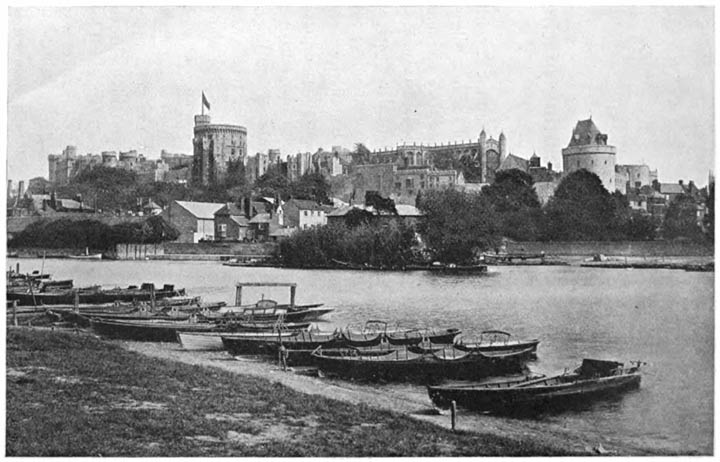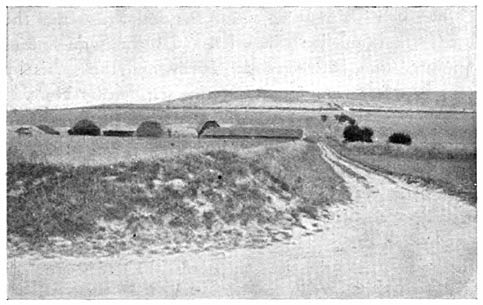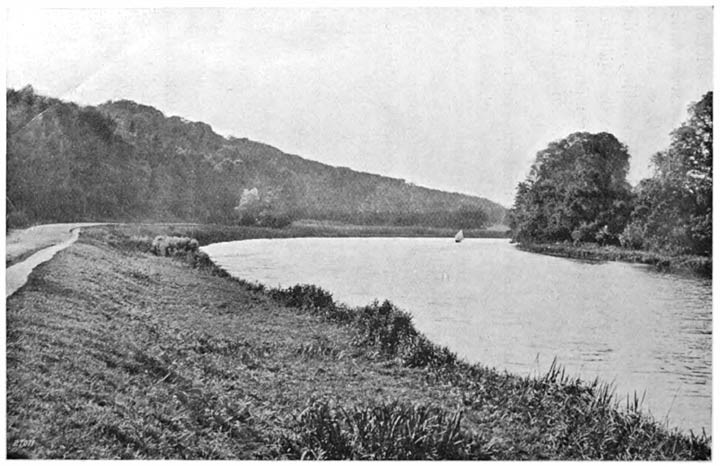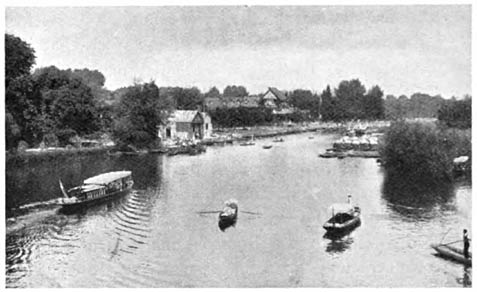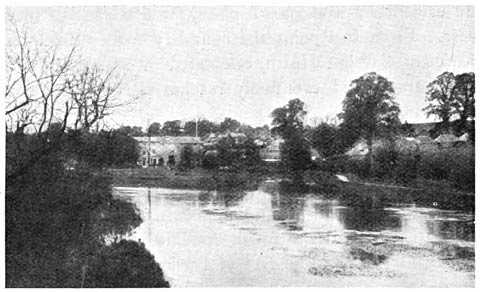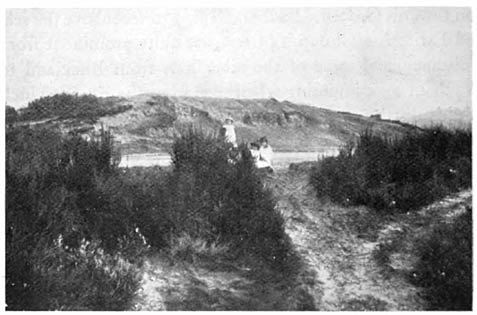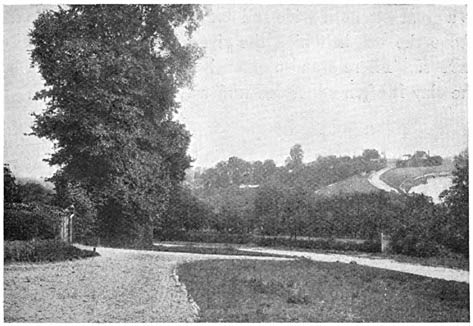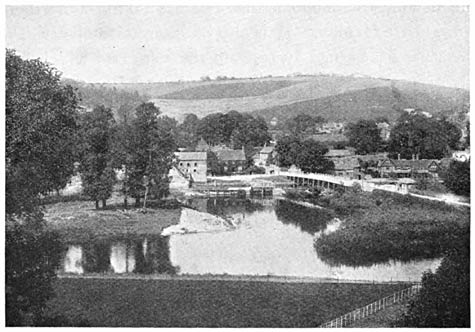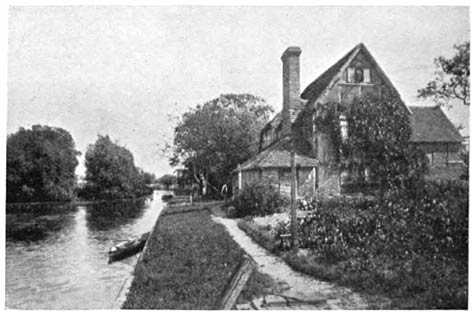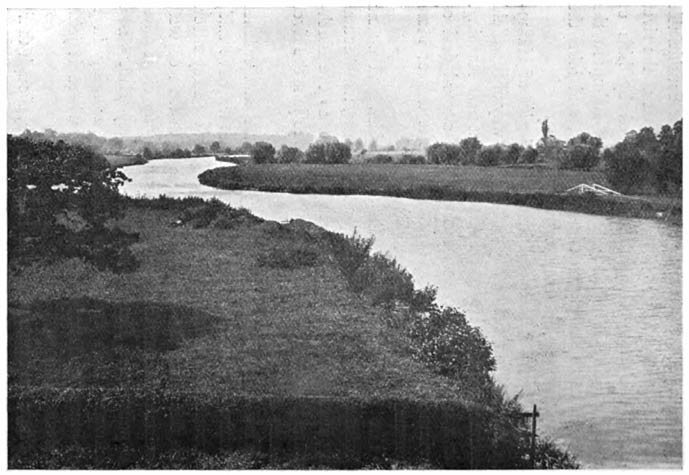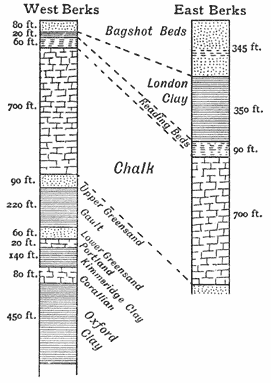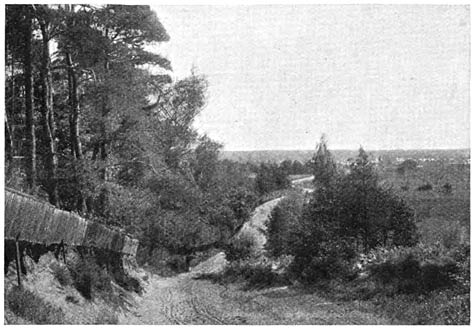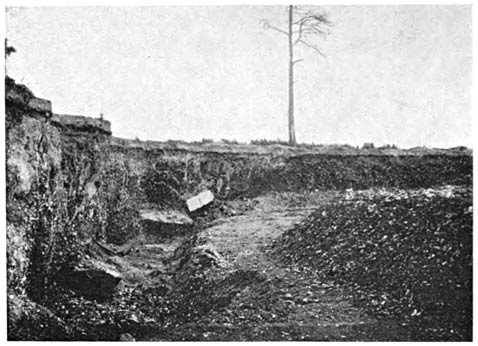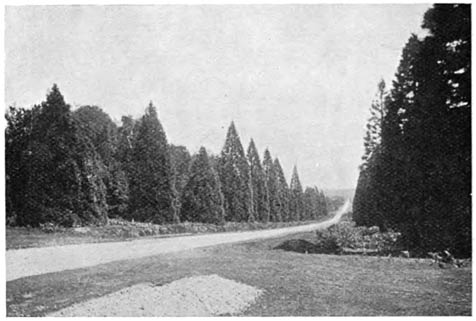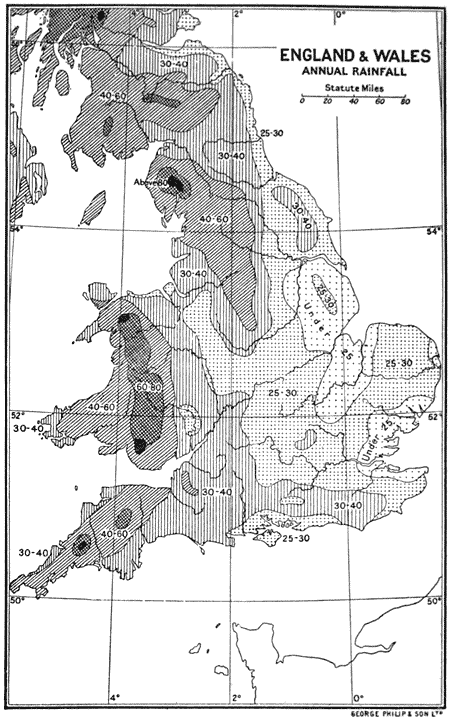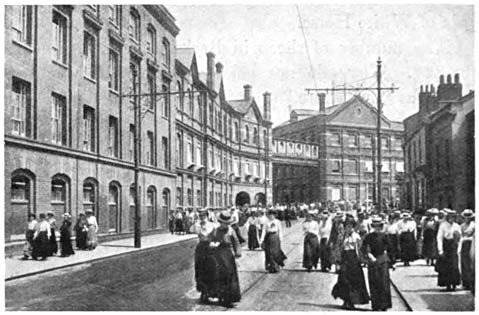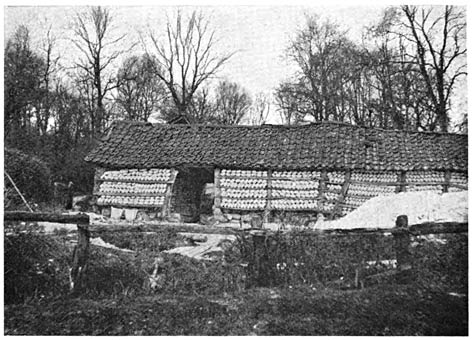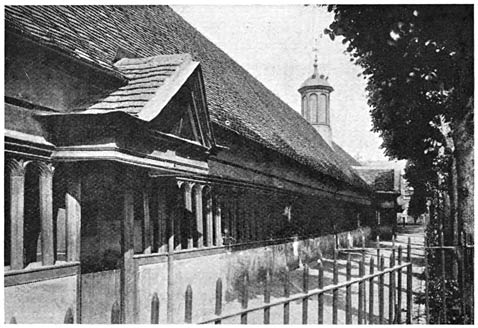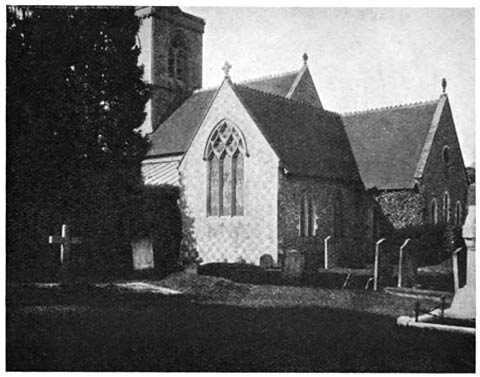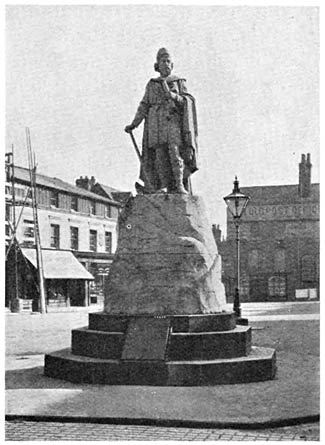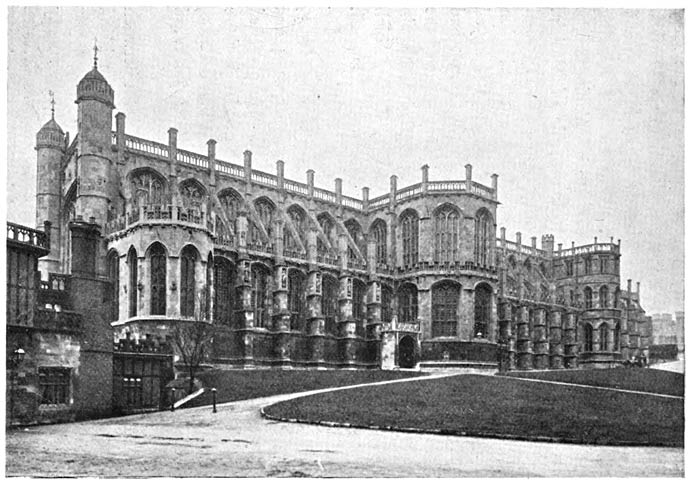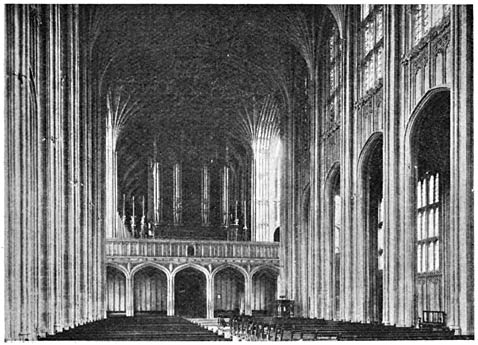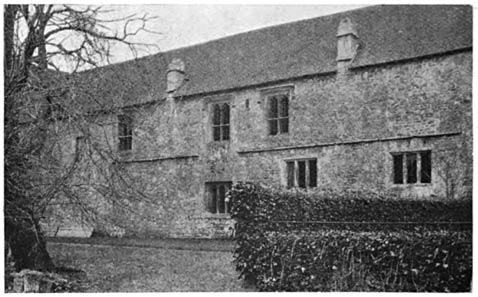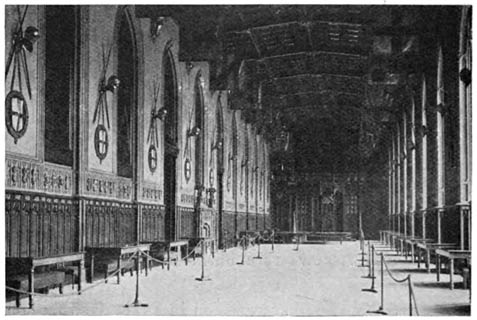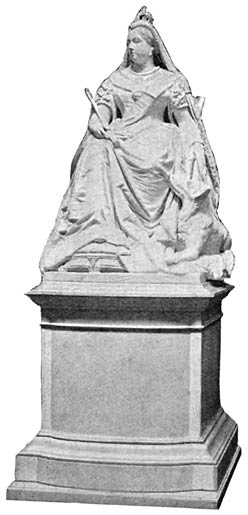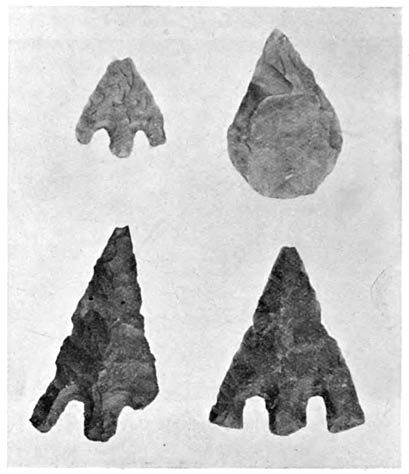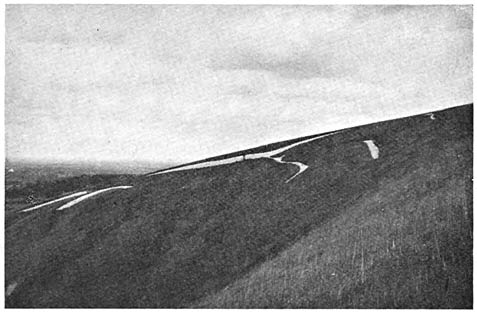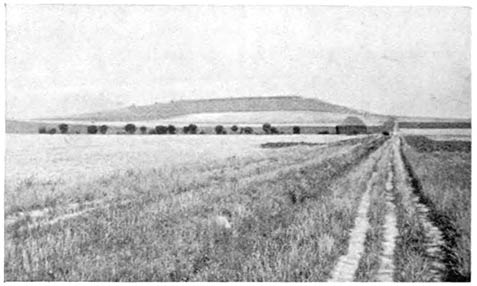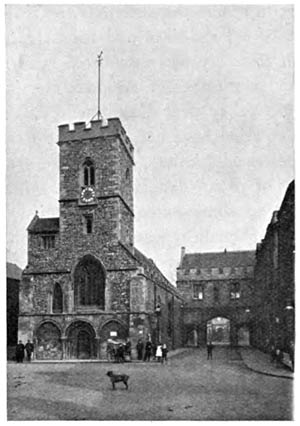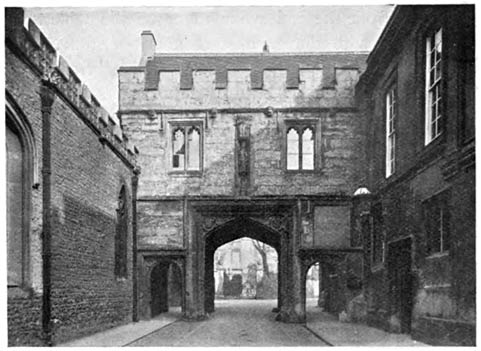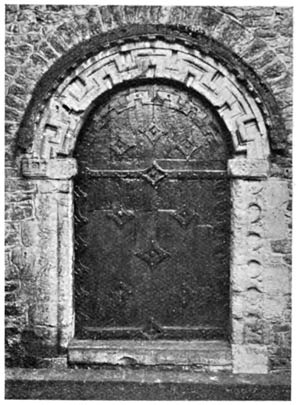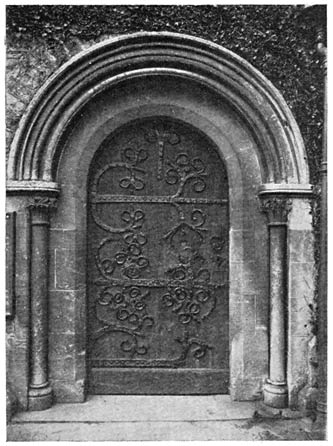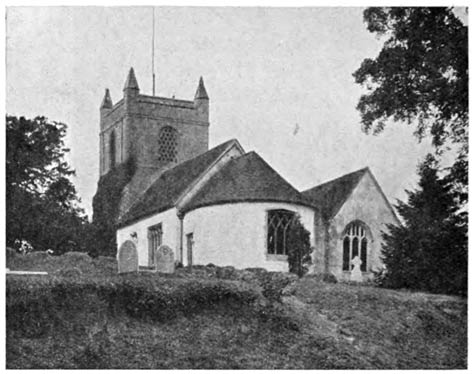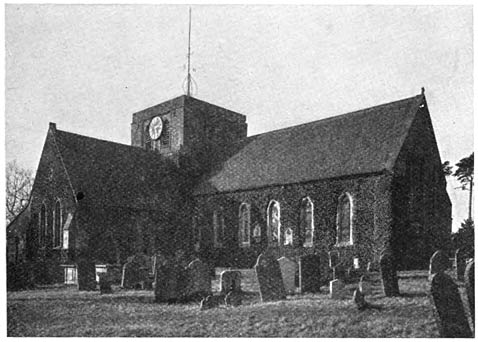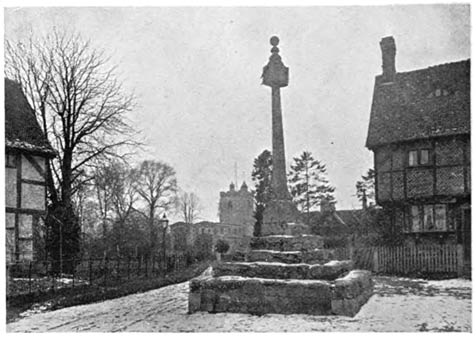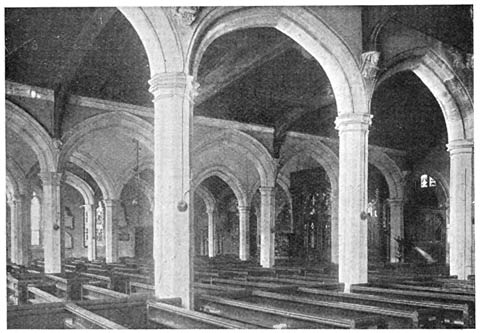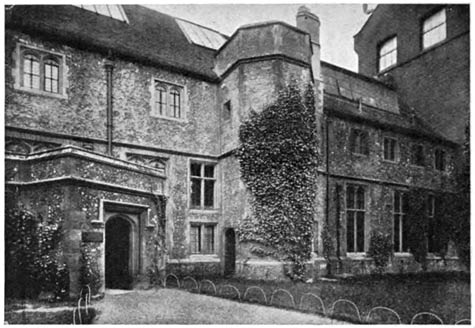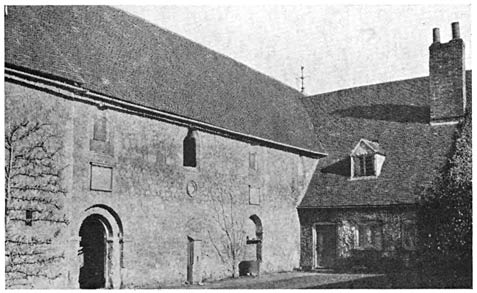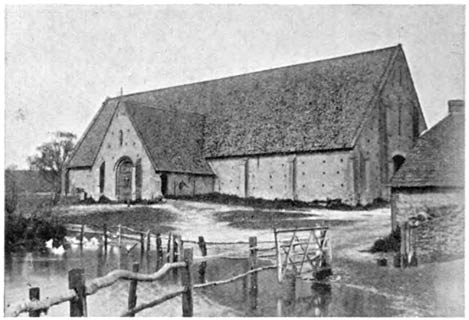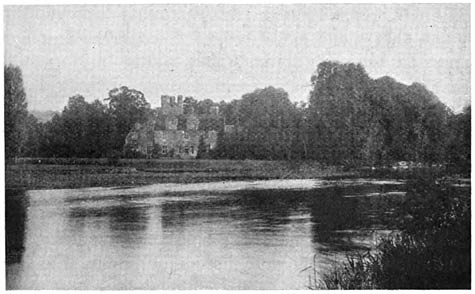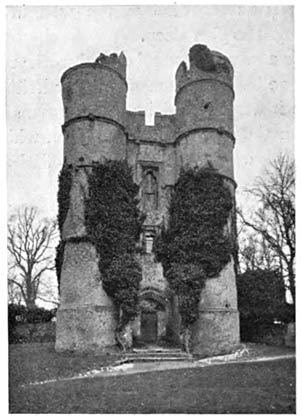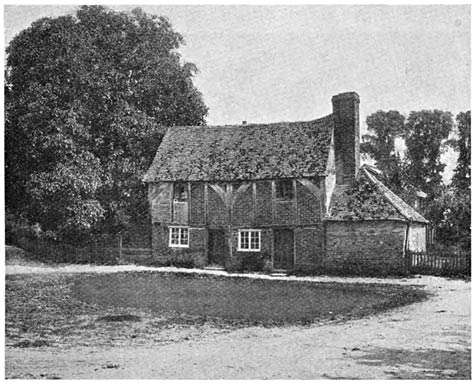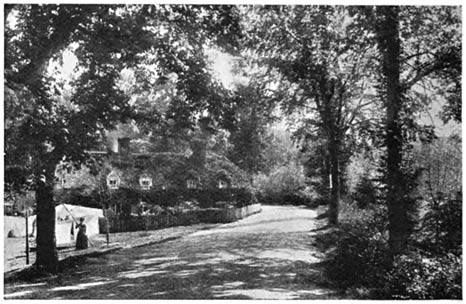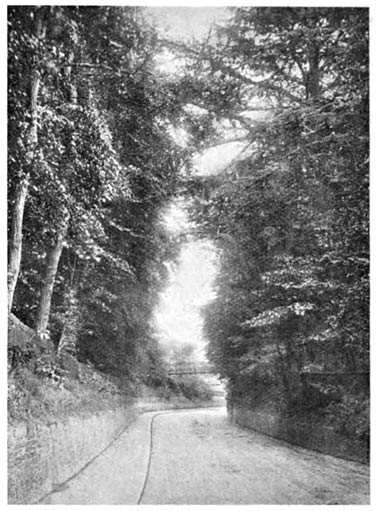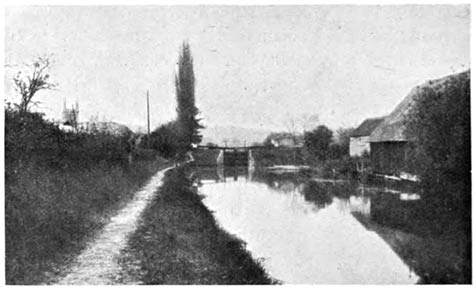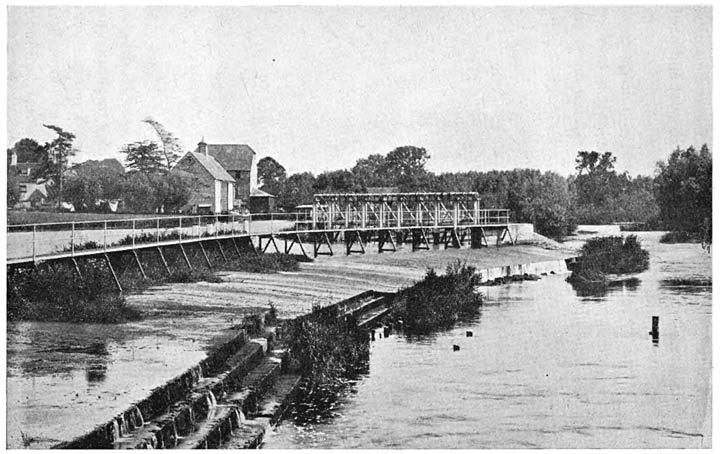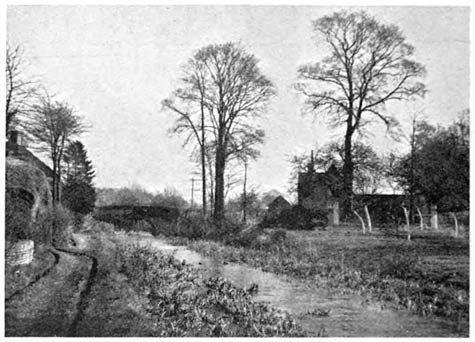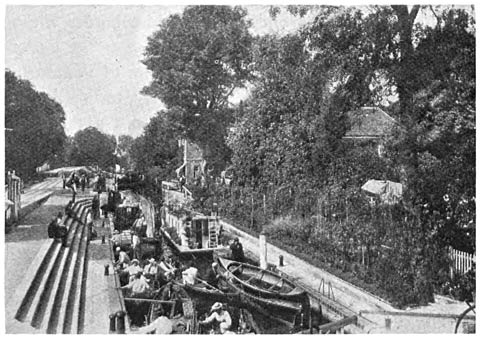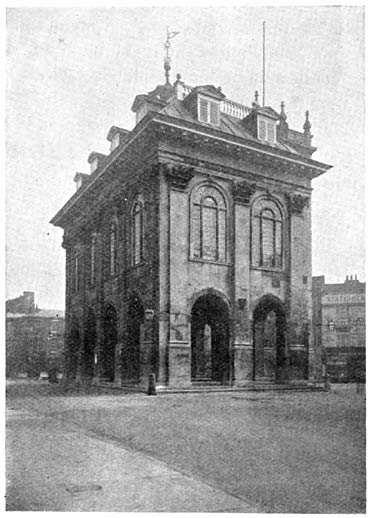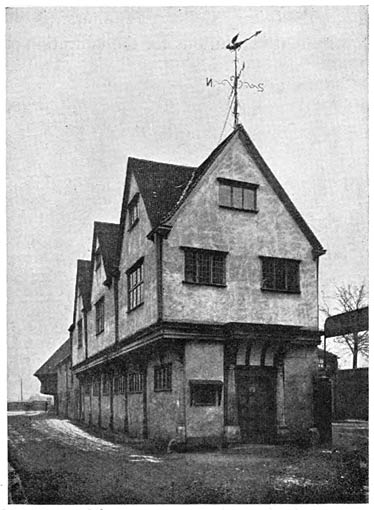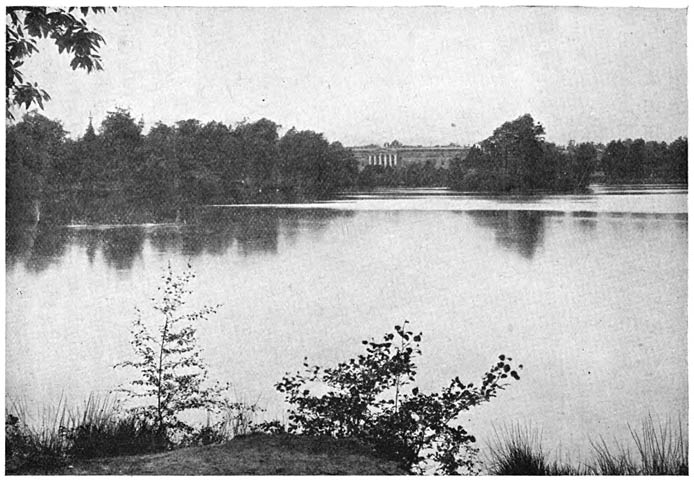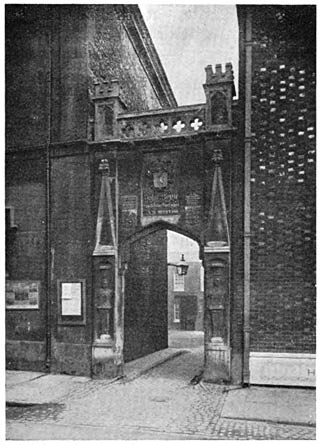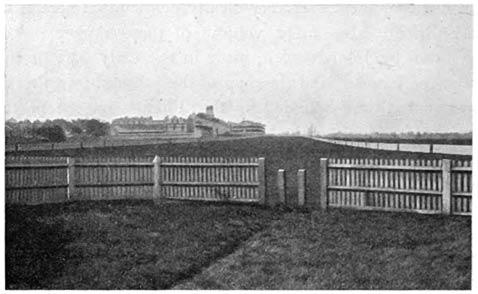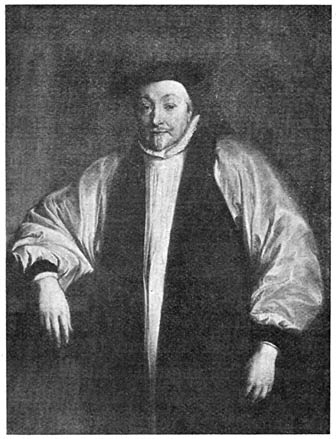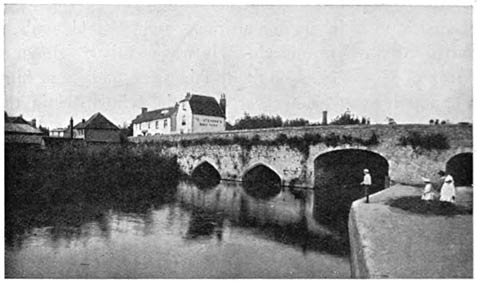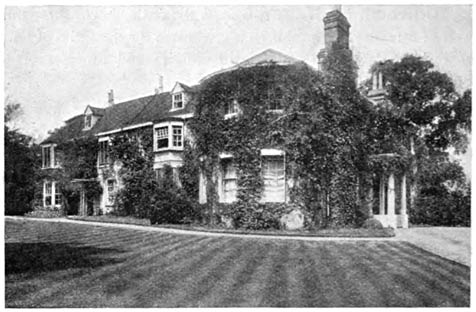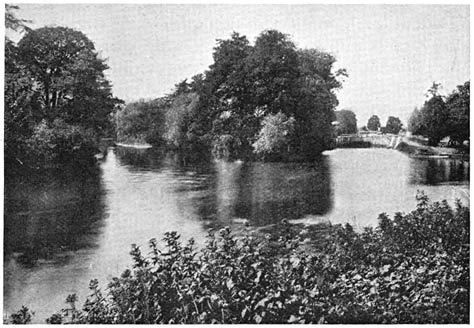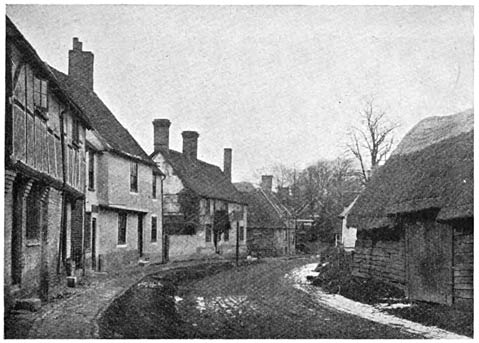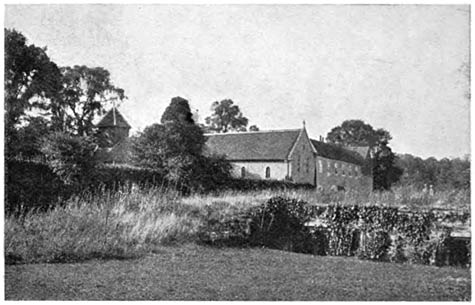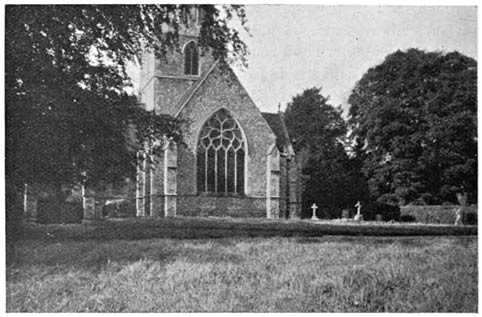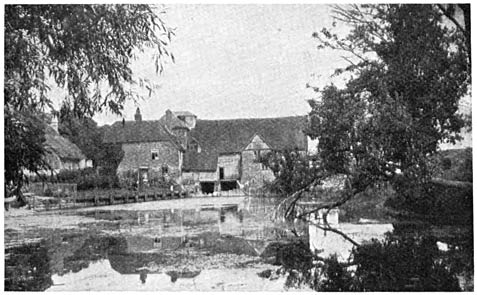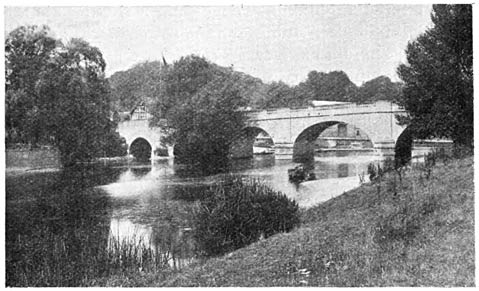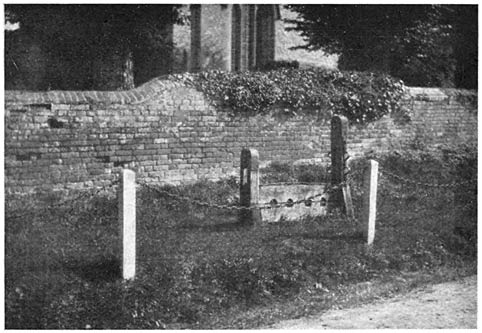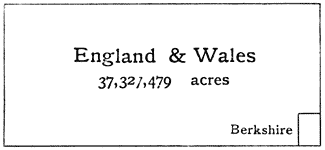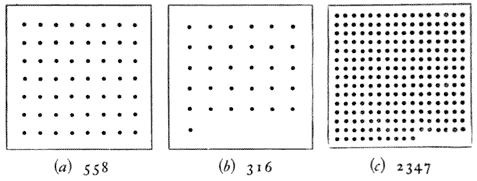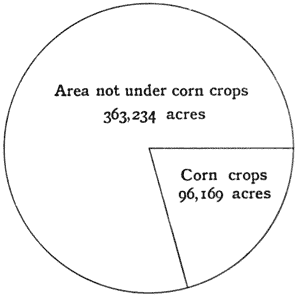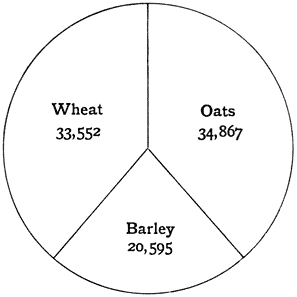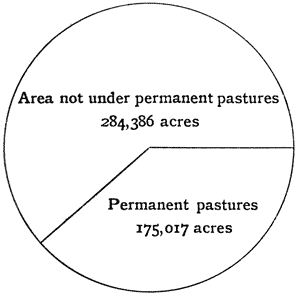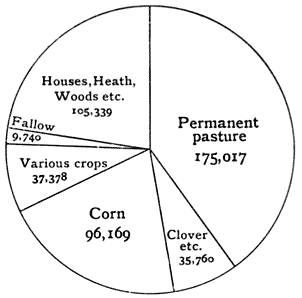(The figures in brackets after each name
give the population of the town or parish in 1901, and those at the end
of the sections give the references to the text.)
Abingdon (6441). A municipal borough in the
Abingdon division of the county. It is situated at the junction of the
river Ock with the Thames, 61 miles from Paddington by railway, and 56
miles from London by road. It was incorporated by Charter granted by
Philip and Mary in 1555. Its trade is mainly in agricultural produce,
and its manufactures are carpets, woollen [158]goods,
and sacking. We have already referred to the remains of its great
Benedictine Abbey as well as to its churches, Christ’s Hospital,
and the Town Hall. The Earl of Abingdon is the High Steward of the
borough. (pp. 19, 24, 34, 57, 62, 65, 74, 92, 94, 97, 100, 101–4,
113, 116, 122, 123, 129, 134, 140.)
Aldermaston (482). A village with a railway
station eight miles from Reading on the Newbury line. The church is of
various styles. There is a Norman doorway built in at the west end
under the tower. The east window of three lights is Early English. (p.
116.)
Aldworth (211). A village on the chalk downs
three miles west of Streatley. The church is celebrated for the series
of tombs of the De la Beche family with effigies and canopies of the
Edwardian period.
Appleton (466). A village near the Thames five
miles north-west of Abingdon. The remains of a Norman manor house exist
near the church. It is defended by a moat, and there are two other
moated houses at no great distance. (pp. 18, 113.)
Ardington (433), a village at the north side of
Lockinge Park with a church mainly in the Early English style. There is
a fine chancel arch, and the north doorway is round-headed. (pp. 78,
101.)
Ascot Heath (1927). A village and parish with a
railway station 29 miles from Waterloo. The race-course is close to the
station. (pp. 16, 39, 136.)
Ashbury (589). A village five miles north-west of
Lambourn; the church with some windows in the Decorated style, a good
Norman doorway, and other points of interest. In the parish there is a
manor house of the fifteenth century moated on three sides. The area of
the parish is 5609 acres and the population has been reduced from 786
in 1851 to 589 in 1901. (pp. 84, 113, 117, 119.) [159]
Avington (97). A village on the river Kennet two
and a half miles east of Hungerford. It has a very curious and fine
Norman church with a rich arch between the nave and the chancel. The
font with 13 figures is Norman. (p. 95.)
Balking (295). A village in Uffington parish, and
near Uffington station. The church is small with a very good Early
English chancel, and an east window of three lancet lights.
Basildon. (pp. 90, 142.)
Beech Hill (265). (p. 108.)
Beedon (232). A scattered village or hamlet in
the chalk district south-west of Compton. The church belongs to the
period of transition between the Norman and Early English styles. The
font is Early English.
Binfield (1892). A village and district three
miles north-east of Wokingham, the early home of the poet Pope. The
church is largely built of conglomerate from the gravel. The arch under
the tower, Perpendicular in style, is of chalk. In the church there
[160]is a chained copy of the Paraphrase of
Erasmus upon the New Testament. Billingbear, a fine Elizabethan house
with a large park, lies to the north-west of the village. (pp. 101,
116, 142, 143.)
Bisham (594). A parish on the Thames a little
above Cookham. The church and abbey have been already referred to. (pp.
57, 73, 76, 77, 106, 107, 116, 141.)
Boxford (461). A village with a railway station
on the Lambourn line four miles north-west of Newbury. Many Roman
remains have been found in the parish.
Bradfield (1526). A village seven miles to the
west of Reading. Bradfield College is a well-known public school. (pp.
21, 132.)
Bray (1722). A village on the Thames between
Maidenhead and Windsor. The well-known vicar, Simon Aleyn (died 1588)
[161]succeeded in retaining his living during the
reigns of Henry VIII, Edward VI, Mary, and Elizabeth. The song wrongly
gives him a later date. The church is partly Early English; the tower
is Perpendicular. Bray gives its name to the Hundred, which includes
most of Maidenhead. (pp. 20, 62, 100, 134, 138.)
Buckland (665). A large village four miles
north-east of Faringdon. The large cruciform church is mostly Early
English. The central tower is low and massive with fine Early English
tower arches. The tracery has in modern times been removed from most of
the windows. The population of the parish has diminished in recent
years. (pp. 88, 98.)
Bucklebury (1066). A village in a large parish
six miles north-east of Newbury. Swift visited Henry St John, Viscount
Bolingbroke, at Bucklebury in 1711. (p. 21.)
Burghfield (1352). A village in the clay district
five miles south-west of Reading. A curious wooden effigy of the
fourteenth century is preserved in the church. (p. 57.)
Chieveley (1204). A village four miles north of
Newbury. The church is partly in the Early English style, the chancel
with good lancet windows. The south doorway is round-headed and late
Norman. Cromwell is said to have slept at the Old Blue Boar Inn the
night before the second battle of Newbury.
Cholsey (1826). A large village with a railway
station 48–1/2 miles from Paddington, the junction for
Wallingford, distant 2–1/2 miles to the north-east. The large
cruciform church has a fine Early English chancel. The arches of the
central tower are massive and early Norman, and there are good Norman
doors and windows in the church. The upper part of the tower belongs to
the Decorated period. (p. 91.)
Clewer (6171) on the river Thames is practically
a suburb of Windsor, with numerous orphanages, homes, and other
charitable institutions. [162]
Coleshill (342). A village three and a half miles
west-south-west of Faringdon on the Berkshire side of the river Cole.
Coleshill House was built from designs by Inigo Jones. There are late
Norman and also Early English arches in the church and the tower with
its parapet and pinnacles is a good example of the Perpendicular style.
The base and shaft of a village cross remain in the churchyard. (p.
117.)
Cookham (3007). A village with a railway station
on the Thames a little above Maidenhead. The church is largely Early
English in style, the solid square tower is Perpendicular and is a
prominent object from the river. (p. 17.)
Coxwell, Great (264). (pp. 106, 116.)
Crowthorne (3185). A village and ecclesiastical
district in the parish of Sandhurst. On Norden’s map of Windsor
Forest (temp. James I) the name is given to a tree at a point
[163]where three of the Walks met, and the place
is also on the boundary of three parishes. Wellington College and
Broadmoor Lunatic Asylum are close to the village.
Cumnor (870). A village three miles south-west of
Oxford. The church is late Norman and Early English with some later
work. The tower has a round-headed west doorway and good Transition
tower arch. There are scarcely any remains of Cumnor Hall. (pp. 77,
102, 104, 114, 120.)
Didcot (420). An important junction on the Great
Western Railway 53 miles from Paddington. In the church is an effigy of
the thirteenth century with a mitre, supposed to be that of the first
mitred abbot of Abingdon. The base of the cross in the churchyard is
old. (pp. 88, 124.)
Donnington. A hamlet two miles north of Newbury,
with a castle and priory. (pp. 80, 108, 111.)
Earley (10,485), is becoming a suburb of Reading.
Whiteknights, a seat of the 4th Duke of Marlborough, has now vanished
and the park is partly built over.
Easthampstead (1708), a village three and a half
miles south-east of Wokingham, gave its name to one of the Walks in
Windsor Forest. Caesar’s Camp (see page 89) is a mile to the
south. There are four windows by Burne Jones in the church. (pp. 89,
90, 135, 143.)
Englefield (315). A village and park five miles
west of Reading. (pp. 77, 139.)
Faringdon (2770). A market town with railway
station 70 miles from Paddington. The trade is mainly in cattle, sheep,
bacon, and corn. (pp. 35, 62, 67, 70, 88, 95, 97, 99, 106, 117, 120,
129, 141, 143.)
Finchampstead (666). A village three miles
south-west of Wokingham. (pp. 96, 98.) [164]
Hagbourne, East and West (1360).
Villages near Didcot junction, both very attractive, with old cottages
and half-timbered houses. There are two village crosses and part of a
third. In the church at East Hagbourne are good examples of Transition
Norman and of all the later styles of architecture. The chancel arch is
Transition, the tower arch and chancel Early English, and the tower
Perpendicular in style. (p. 86.)
Hampstead Marshall (244). A village three and a
half miles south-west of Newbury. There is a beautiful deer park, the
house in which was burnt in 1718 and has not been rebuilt. (p.
137.)
Hampstead Norris (760). A village and railway
station on the Didcot-Newbury line and in the chalk district. The
church has a Norman doorway and an Early English chancel, and the
staircase to the rood-loft remains. (pp. 21, 90, 138.) [165]
Hendred, East and West (1038) are
villages between Wantage and Didcot, both most attractive, with
half-timbered houses and churches of mixed styles but with many points
of note. Hendred House with an old chapel attached is of considerable
interest. (p. 116.)
Hungerford (2364). A market town on the old Roman
road to Bath on the river Kennet, a part of the town being in
Wiltshire. It is a great resort of anglers. Charles I was at the Bear
Inn, November 1644, and at the same inn William of Orange met the
commissioners from James II in 1688. (pp. 8, 13, 18, 22, 80, 119, 120,
142.)
Hurley (493). An interesting village on the
Thames with old houses, four miles north-west of Maidenhead. (p.
105.)
Hurst (1214). A village three miles north-west of
Wokingham. (p. 101.) [166]
Ilsley, East (482). A small town in the chalk
district two and a half miles from Compton station with a large sheep
market. The Duke of Cumberland, uncle of George III, had a house and
training stables here, and it is now a great place for training horses.
The church is mainly Early English. (pp. 80, 118.)
Inkpen (658). A village four miles south-east of
Hungerford. To the south of the village there is a range of chalk
hills, the highest of which is Inkpen Beacon, 975 feet above the sea.
Walbury Camp is a large earthwork on the same range a little to the
east, with an altitude of 959 feet. (p. 12.)
Kintbury (1548). A large village with a railway
station nearly midway between Newbury and Hungerford. It is on the
river Kennet. Brick-making is carried on in the neighbourhood and there
is a whitening factory. The church is largely Norman with an Early
English tower. (pp. 60, 61.)
Lambourn (1476). A small town in the midst of the
chalk district with a light railway to Newbury (12 miles). It is an
important centre for training race-horses. The river Lambourn is a good
trout stream. There is an old market cross. The large church is
cruciform with a central tower which is Norman in character with small
round-headed windows. Much of the church is Transition Norman. The east
window is of the Perpendicular period. (pp. 85, 143.)
Lockinge, East (301). A village two miles
south-east of Wantage. The church, mainly of the Decorated style but
with a good Norman doorway, has been recently enlarged. Lockinge House
stands in a beautiful park close to the village. (p. 91.)
Maidenhead (10,757). A municipal borough and
market-town on the Thames with a railway station 24–1/2 miles
from Paddington. The borough is partly in Bray and partly in Cookham
parish. There are grain mills and breweries, and some trade in timber
is carried on. (pp. 12, 17, 20, 75, 90, 114, 119, 120, 123, 138.)
[167]
Marcham (798). A village two and a half miles
west of Abingdon with many stone quarries in the neighbourhood. (pp.
34, 89.)
Mortimer. See Stratfield Mortimer.
Newbury (8924). A municipal borough and
market-town with a railway station on the Great Western 53 miles from
Paddington, and also with railways to Didcot, Southampton, and
Lambourn. The borough was incorporated by charter of Elizabeth. The
chief trade is in agricultural produce. There are maltings and corn
mills. The town has large new municipal buildings, a free library, a
district hospital, and a large grammar school as well as many
charities. A race-course has recently been made a little to the east of
the town with a separate railway station. (pp. 17, 22, 59, 70, 76, 79,
86, 89, 101, 111, 115, 119, 128, 129, 137, 145.) [168]
Pangbourne (1235). A village with a railway
station 41–1/2 miles from Paddington, situated at the junction of
the river Pang with the Thames. (pp. 10, 21, 85.)
Radley (444). A village with a railway station 58
miles from Paddington. Radley College, a large public school, is
situated a mile to the west of the village. (pp. 133, 138.)
Reading (52,660). A county, municipal, and
parliamentary borough, and the county town of Berkshire. It is a most
important railway centre 36 miles from Paddington and is served by the
South Western and South Eastern as well as by the Great Western
railways. It has, in fact, excellent railway communication with every
part of England and Wales. The charter of incorporation was granted by
Henry III.
Reading is situated on the river Kennet close to its
junction with the Thames. There are large municipal buildings with a
free library and an excellent museum, a county hospital, a university
college, a grammar school, and many other schools and charitable
institutions. The Berkshire County Hall and the Assize Courts are at
Reading and are close to the old gateway of Reading Abbey. The few
remains of the abbey are now the property of the Corporation and are
laid out as gardens adjoining the public Forbury garden. The railway
works are extensive and there are iron foundries, engine and
agricultural implement works, cycle works, electric-light works,
printing works, a very large establishment for making biscuits, and
also one for the production and sale of seeds. There are also flour
mills, breweries, brick and tile works, steam launch and boat-building
yards, and establishments for making ropes and sacks. St Mary’s
church is said to have been built of materials from the ruins of the
abbey. The walls are largely of a chequer pattern of dressed flints and
squares of freestone. (pp. 6, 19, 22, 36, 54, 58, 62, 64–84, 89,
90, 99, 103, 104, 108, 125–133, 140, 144.) [169]
Sandhurst (2386). A village on the river
Blackwater four and a half miles south-east of Wokingham with a railway
station on the South Eastern and Chatham railway. The Royal Military
College is two miles south-east of the village near Blackwater station.
(pp. 130, 132.)
Shefford, Great or West Shefford (422). A
village between Lambourn and Newbury. The church has been already
mentioned. (p. 117.)
Shinfield (1015). A large village three miles
south of Reading.
Shottesbrook. A park four miles south-west of
Maidenhead. The beautiful church has been already mentioned. (pp. 63,
108.)
Shrivenham (951). A village with a railway
station on the Great Western 71–1/2 miles from Paddington, near
the border of Wiltshire. It gives its name to the Hundred. (pp. 72,
138, 143.) [170]
Sonning (526). A very attractive village on the
Thames two and a half miles below Reading, the parish is partly in
Oxfordshire. In the tenth and eleventh centuries there was a Bishop of
Berks and Wilts and the palace was at this place. The church is large
with Early English arches and many monuments.
Sparsholt (646). A village three and a quarter
miles west of Wantage. There is a fine church in the Decorated style.
(p. 99.)
Stanford in the Vale (853). A village nearly four
miles south-east of Faringdon. The church, in mixed styles, is
interesting. The tower is Early English, there is a squint from the
north aisle to the altar, and a very curious piscina with a reliquary
above it.
Steventon (797). A village with railway station
on the Great Western three and a half miles south-south-west of
Abingdon. There is a raised flood-path by the road through the village,
a number of old houses, and a church in mixed styles with a
[171]south aisle and tower arches of the
Decorated period. (pp. 101 108, 117.)
Stratfield Mortimer (1405). A village and
residential district with a railway station named Mortimer on the
Reading and Basingstoke line, the nearest station to the Roman town of
Silchester in Hampshire.
Streatley (562). A village on the Thames opposite
Goring in Oxfordshire, with which it is connected by a bridge. This is
a very old crossing place and the Ridgeway is directed towards this
point. (pp. 19, 90, 118.)
Sunningdale (1409), five miles south of Windsor,
with a station on the London and South Western, was until recently a
district of heath and pine woods, but it is being rapidly built over
and good golf links attract many visitors. (p. 86.)
Sunninghill (2479). A village and residential
district close to the above. Two chalybeate springs, Sunninghill Wells,
were a fashionable resort in the eighteenth century. (pp. 106, 118,
135.)
Sunningwell (289). A village two miles north of
Abingdon. Bishop Jewel was vicar and is said to have built the singular
octagonal porch at the west end of the church.
Sutton Courtney (1295). A village on the Thames
two miles south of Abingdon. The abbey, the manor house, and the manor
farm were buildings connected with Abingdon Abbey, and are all of
interest, dating from the twelfth to the thirteenth century. In the
church the chancel arch and walls are Transition Norman, the tower arch
is Norman. (p. 114.)
Swallowfield (1375). A village on the river
Blackwater five miles south of Reading. The church has a wooden
bell-cot with very fine old timber work. A Bible of 1613 is preserved
in the church and Miss Mitford’s grave is in the churchyard. (p.
144.) [172]
Thatcham (2177). A large village three miles east
of Newbury which was once a small town with a market. There is some
good Norman work in the church.
Three Mile Cross. (p. 144.)
Tidmarsh. (pp. 21, 30.)
Tilehurst (5965). A village on the plateau two
miles west of Reading with a considerable brickmaking industry.
Twyford (1106). A small town in Hurst parish four
miles north-east of Reading, with a railway station on the Great
Western, the junction for the Henley line. (pp. 17, 142.)
Uffington (518). A village in the Vale of White
Horse about six miles west of Wantage with a railway station
66–1/2 miles from Paddington, the junction for the Faringdon
line. There is a large cruciform church mainly dating from the Early
English period. The central tower is octagonal. Uffington Castle is a
large earthwork on the chalk downs close to the White Horse and two
miles south of the village. (pp. 5, 7, 86, 88, 98.) [173]
Upton (338). A village with railway station on
the Didcot and Newbury line, two and a half miles south of the former
and on the edge of the chalk district. The church is a small Norman
chapel of early character.
Wallingford (3049). A municipal borough and
market-town 51 miles by rail from Paddington and 46 miles by road from
London. It is situated on the Thames and is built on a wide area of
river gravel. The charter of its incorporation dates from the time of
Henry II. There is a bridge over the river built in 1809 on the site of
an older structure. The town hall with an undercroft of 1670 has been
already mentioned (page 128). There is a corn exchange, free library,
and grammar school. The trade is in agricultural produce and malt. On
the three sides of the town away from the river are very ancient earth
ramparts, and the keep-mound and some slight remains of a Norman castle
still exist. (pp. 57, 59, 65, 67, 68, 70, 71, 73, 74, 80, 85, 88, 91,
106, 111, 128, 142, 143.)
Waltham St Lawrence (867). A village four and a
half miles south-west of Maidenhead. (pp. 62, 90.)
Waltham, White. See White Waltham.
Wantage (4146). A market-town in the Vale of
White Horse. The railway station, Wantage Road, is nearly two and a
half miles from the town. There are ironworks but otherwise the trade
is mainly in agricultural produce. The church is large, cruciform and
in mixed styles. Wantage was the birthplace of Alfred the Great, and
Butler, the author of the Analogy, was also a native. (pp. 30,
67, 119, 122, 137, 140.)
Warfield (919). A village in Windsor Forest with
an interesting church mainly in the Decorated style. A mile to the
north-west is the steeplechase course of Hawthorn Hill. (p. 99.)
Wargrave (1857). A large village on the river
Thames between Reading and Henley. (pp. 20, 23, 144.) [174]
White Waltham (679). A village three miles
south-west of Maidenhead. Prince Arthur, son of Henry VII, lived in the
manor house, now a farm. (pp. 64, 142.)
Wickham. A village on a clayey hill five and a
half miles north-west of Newbury. The very old church tower has been
already noticed. (pp. 95, 119.)
Windsor or New Windsor (13,958). A
municipal borough and market-town 22 miles from London. It is a
parliamentary borough, a large part of which is in Buckinghamshire. The
town, which has grown up round the castle, was incorporated by Edward
I. The High Steward is H.R.H. Prince Christian. There is a town hall,
public library, and reading room, and both cavalry and infantry
barracks. Windsor Castle has long been a favourite residence of our
Kings and Queens. (pp. 20, 62, 68–80, 89, 95, 99, 104, 108, 114,
117, 128, 134, 142.) [175]
Windsor, Old (1962). A village two miles
south-east of the castle. It was the residence of Edward the Confessor.
The church is a small one in the Early English style. Beaumont College
is in this parish.
Winkfield (1026). A village in Windsor Forest
four and a half miles south-west of Windsor. Foliejon Park is a little
to the north of the village. (p. 35.)
Wittenham, Long (470). A village on the Thames
between Abingdon and Wallingford with an interesting church of mixed
styles but mainly of the Decorated period. (pp. 91, 101.)
Wokingham (5923). A municipal borough and
market-town with a railway station 36–1/4 miles from Waterloo.
The charter of incorporation was granted by Queen Elizabeth. There is a
town hall and also a number of charitable endowments, one of which was
founded by Archbishop Laud. The trade is mainly in agricultural
produce, timber, bricks and tiles. (pp. 60, 128, 134, 140.)
Wytham (230). A village in the most northern
corner of Berkshire, close to Oxford. The church is built of material
which was mostly brought from Cumnor Hall. Wytham Abbey, a building of
the sixteenth century, is close to the church and has a fine park. (pp.
114, 139, 140.)
Yattendon (274) stands on a clayey hill five and
a half miles west of Pangbourn. The church, built about 1450, is a good
example of the Perpendicular style. There are some extensive and
ancient underground galleries in the chalk near this place. (pp. 85,
139.) [176]




